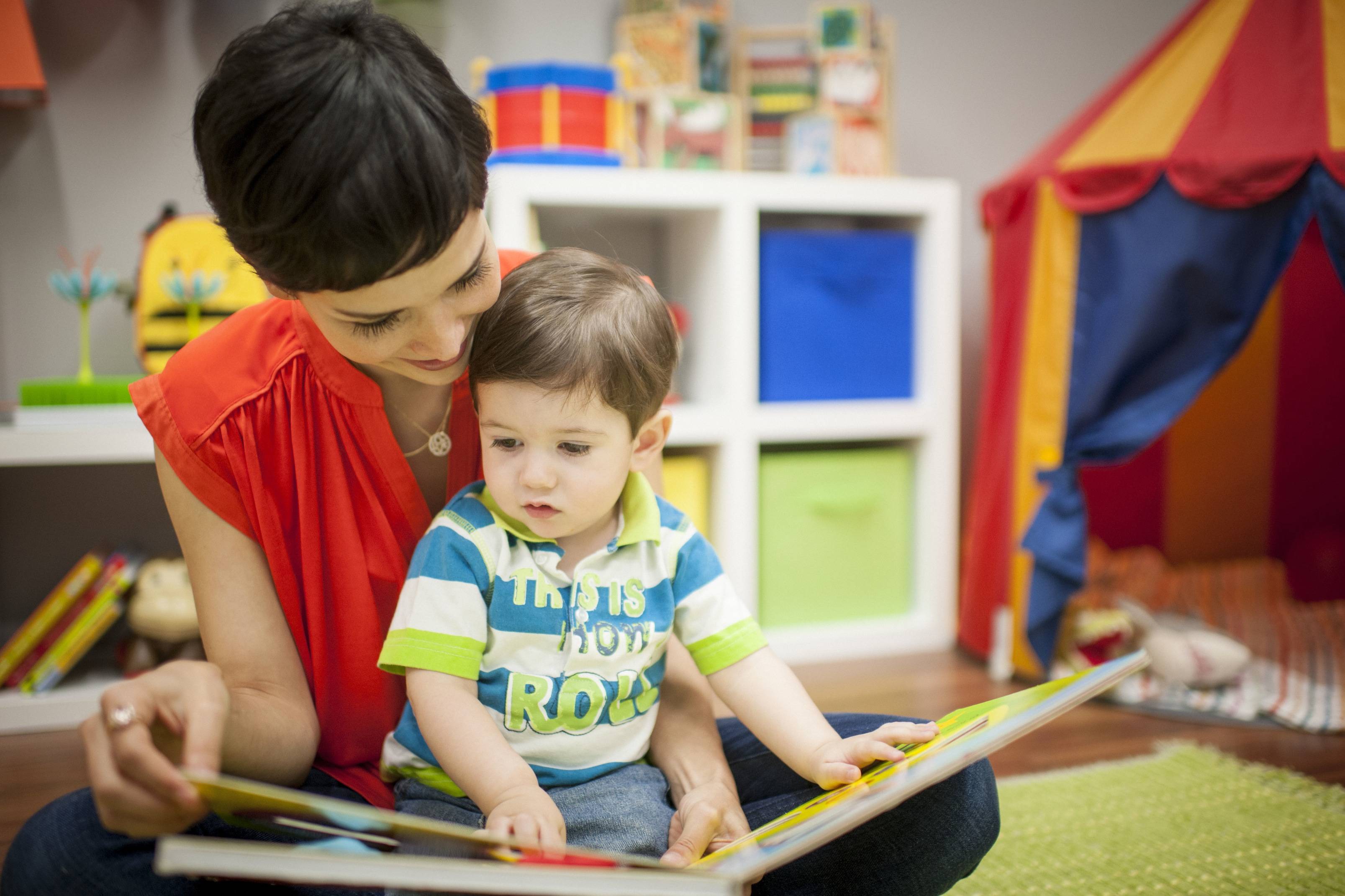Key points:
- Start reading with your baby early, making it a daily habit.
- Respect your baby’s preferences; don’t force reading if they resist.
- Adapt reading to your baby’s age, encouraging interaction.
- Visit the library for storytime to enhance the reading experience.
At one year old, babies have developed their personality and they are attached to their parents or caregivers. This is why reading is so important at this age because you can strengthen your little one’s abilities while reading. But careful! Never force your baby to share a book if they don’t want to. Instead, try to find another activity you both can do and you can read in another moment.
Depending on your baby’s age, you can focus on different aspects of the reading experience, but what’s the best way to share books with a one-year-old? The American Academy of Pediatrics has created a literacy toolkit that includes great tips for parents and caregivers who wish to make the most out of reading time!
This blog post will summarize a few key points about reading with one-year-old babies throughout three stages: 12–14 months, 15–17 months, and 18–23 months. Within each age range, you’ll find examples of what your child can do and what you can do to maximize the reading experience!
Tips for reading with babies
12 to 14 months old
Your child can:
At this stage, your little one can probably pick a favorite book to read with you and point to the pictures they want you to look at too! Your baby will most likely explore the book, turning it upside down, opening or closing it, and even putting it in their mouth. They will try to copy your reactions while reading and pay attention for a few minutes at a time.
You can:
Find a quiet, cozy place to cuddle up and read together. While reading, name and point at the pictures your child is looking at or pointing to. Help them turn the pages, following their interest. Read joyfully, using different tones of voice for each character. You can also ask your child questions they can answer by pointing to things, like “Where’s the kitty?”. Also imitate your child’s sounds and talk to them about the pictures in the book using short phrases.
Reading with babies 15 to 17 months old
Your child can:
At this stage, your youngster can pick a favorite book to read with you, look at familiar pictures, and make sounds for some of them, like the different animals. While reading, your little one will pay attention for a few minutes at a time and laugh, squeal, and point while enjoying reading time with you.
You can:
Find a quiet, cozy place to cuddle up and read together. Let your little one choose which book they want to read with you, even if it’s the same from last time (and the last before that!). While reading, name and point at the pictures your child is looking at or pointing to. Read joyfully, using different tones of voice for each character, and copy the sounds or words they say while looking at a picture, adding a few more words to complete a phrase. You can also name and demonstrate actions or emotions that show up in books, like smiling. You can say “Look at the girl smiling” and then smile at your toddler.
18 to 23 months old
Your child can:
At this stage, your little one can pick the book they want to share with you and point at familiar pictures, saying a word or two about it. If the book includes animals, your child will probably imitate their sounds. Also, if you are reading a very familiar book, your little one will be able to finish some sentences such as: “Twinkle, twinkle little… (star)”. This is also a good age to enjoy a trip to the local library for storytime or to find new books!
You can:
Find a quiet, cozy place to cuddle up and read together. Reading time can become a way to calm and comfort your child, especially if it’s part of your nighttime routine. Let them choose which book they want to read with you, even if it’s the same one from last time (and the last before that!). Help your toddler understand the story by speaking slowly and in short sentences. Read joyfully, using different tones of voice for each character, and copy the sounds or words they say while looking at a picture, adding a few more words to complete a phrase. You can also pretend to be characters from the book, acting like babies, puppies, or whatever you’re reading about!
So there you go! Reading with babies is quite simple, fun, and will give great quality time together as a family.








